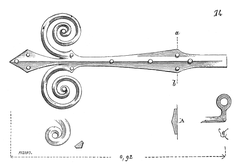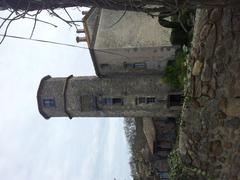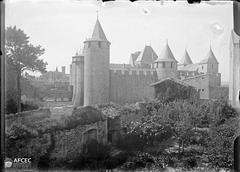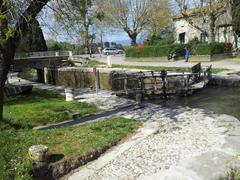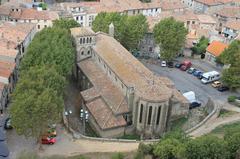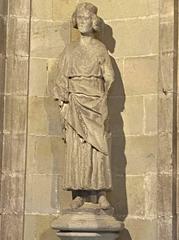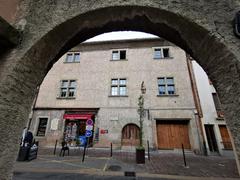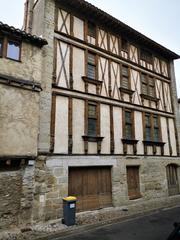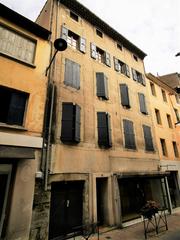Visiting Chemin de Halage in Carcassonne: Hours, Tickets, and Tips
Date: 24/07/2024
Introduction
The Chemin de Halage along the Canal du Midi in Carcassonne, France, is a historically significant and culturally rich path that offers visitors a unique blend of natural beauty, history, and engineering marvels. Established in the 17th century, this towpath was initially used for pulling barges before the advent of steam-powered boats and railways. Today, it serves as a popular recreational route for both tourists and locals, providing a scenic and peaceful environment for walking, cycling, and boating. Recognized as a UNESCO World Heritage Site, the Chemin de Halage is a testament to the ingenuity and determination of those who built and maintained the Canal du Midi (UNESCO). This guide aims to provide comprehensive information on the history, cultural significance, and practical aspects of visiting the Chemin de Halage, ensuring an enriching experience for all visitors.
Table of Contents
- Introduction
- Historical Background
- Engineering Marvel
- Cultural Significance
- Artistic Inspiration
- Modern-Day Relevance
- Visitor Information
- Travel Tips
- Preservation Efforts
- Economic Impact
- Environmental Considerations
- Visitor Experience
- FAQs
- Conclusion
- Call to Action
Historical Background
The Chemin de Halage, or towpath, in Carcassonne, France, dates back to the 17th century. This path was primarily used for towing barges along the Canal du Midi, a monumental engineering project spearheaded by Pierre-Paul Riquet. The Canal du Midi, completed in 1681, was designed to connect the Atlantic Ocean to the Mediterranean Sea, facilitating trade and transportation (The Crazy Tourist).
Engineering Marvel
The construction of the Canal du Midi and its towpaths, including the Chemin de Halage, was a feat of engineering. The canal stretches over 240 kilometers and includes numerous locks, aqueducts, and tunnels. The towpaths were essential for the movement of goods, as horses or men would walk along these paths, pulling barges laden with cargo. This method of transportation was crucial before the advent of steam-powered boats and railways (The Crazy Tourist).
Cultural Significance
The Chemin de Halage is not just a historical artifact but also a cultural symbol. It represents the ingenuity and determination of the people who built and maintained the Canal du Midi. The canal and its towpaths have been recognized as a UNESCO World Heritage Site since 1996, highlighting their global cultural and historical importance. This designation underscores the significance of the Chemin de Halage as part of a larger network that transformed trade and transportation in France and Europe (UNESCO).
Artistic Inspiration
The Chemin de Halage has also inspired artists and writers over the centuries. The picturesque landscapes and serene environment along the towpath have been captured in numerous paintings and literary works. For instance, the renowned artist Ferdinand Jean Luigini depicted the Chemin de Halage in his watercolors, showcasing the path’s natural beauty and tranquil ambiance (Wikimedia Commons).
Modern-Day Relevance
Today, the Chemin de Halage serves as a popular recreational route for tourists and locals alike. It offers a scenic and peaceful environment for walking, cycling, and boating. The path is well-maintained and provides an excellent way to explore the natural beauty and historical landmarks of the region. The towpath’s proximity to Carcassonne, a city known for its medieval citadel and rich history, makes it an attractive destination for visitors seeking both cultural and outdoor experiences (The Crazy Tourist).
Visitor Information
Visiting Hours
The Chemin de Halage is accessible year-round, with the best times to visit being during the spring and autumn months when the weather is mild.
Tickets
There is no entrance fee to access the towpath, making it an affordable and enjoyable activity for all visitors.
Guided Tours
Various guided tours are available, offering in-depth insights into the history and significance of the Canal du Midi and its towpaths. Check local tourism websites for schedules and prices.
Travel Tips
What to Bring
Comfortable walking shoes, water, and a camera are essential for capturing the scenic views along the Chemin de Halage.
Nearby Attractions
Visitors should also consider exploring nearby attractions, such as the medieval citadel of Carcassonne, to gain a deeper understanding of the region’s rich history and cultural heritage.
Accessibility
The towpath is generally accessible for individuals with mobility issues, but it is advisable to check specific sections in advance.
Preservation Efforts
Preserving the Chemin de Halage and the Canal du Midi is a priority for local and national authorities. Efforts are ongoing to maintain the structural integrity of the canal and its towpaths, ensuring they remain accessible and safe for future generations. These preservation activities include regular maintenance, restoration projects, and environmental conservation initiatives to protect the surrounding ecosystems (Patrimoine de l’eau).
Economic Impact
The Chemin de Halage and the Canal du Midi have a significant economic impact on the region. They attract thousands of tourists each year, contributing to the local economy through tourism-related activities such as guided tours, boat rentals, and hospitality services. The canal also supports local agriculture and viticulture by providing an efficient means of transporting goods to market (The Crazy Tourist).
Environmental Considerations
The environmental impact of the Chemin de Halage and the Canal du Midi is also noteworthy. The canal and its towpaths provide a habitat for various plant and animal species, contributing to the region’s biodiversity. Efforts to preserve and protect these natural environments are crucial for maintaining the ecological balance and ensuring the sustainability of the canal and its surroundings (Patrimoine de l’eau).
Visitor Experience
For visitors, the Chemin de Halage offers a unique blend of history, culture, and natural beauty. Walking or cycling along the towpath provides an immersive experience, allowing tourists to appreciate the engineering marvel of the Canal du Midi and the serene landscapes of the French countryside. Guided tours are available, offering insights into the history and significance of the canal and its towpaths. Additionally, boat rentals provide an opportunity to explore the canal from the water, offering a different perspective on this historic route (The Crazy Tourist).
FAQs
- Is the Chemin de Halage accessible year-round? Yes, it is accessible throughout the year, with spring and autumn being the best times to visit.
- Are there any entrance fees? No, accessing the Chemin de Halage is free of charge.
- Can I take a guided tour? Yes, guided tours are available and provide valuable insights into the history and significance of the Canal du Midi.
- What should I bring when visiting? Comfortable walking shoes, water, and a camera are recommended.
Conclusion
In summary, the Chemin de Halage in Carcassonne, France, is a historically and culturally significant route that offers a unique and enriching experience for visitors. Its historical background, engineering marvel, cultural significance, and modern-day relevance make it a must-visit destination for those interested in history, nature, and outdoor activities. For up-to-date information and more tips on visiting, be sure to follow us on social media and check out our related posts.
Call to Action
For more information, download our mobile app Audiala, which provides detailed guides and interactive maps for exploring Carcassonne and other historical sites. Follow us on social media for the latest updates and travel tips.
References
- The Crazy Tourist. (n.d.). 15 Best Things to Do in Carcassonne (France). Retrieved from The Crazy Tourist
- UNESCO. (n.d.). Canal du Midi. Retrieved from UNESCO
- Wikimedia Commons. (n.d.). Le Chemin de Halage, par Ferdinand Jean Luigini. Retrieved from Wikimedia Commons
- Patrimoine de l’eau. (2016). Les chemins de Halage. Retrieved from Patrimoine de l’eau
- France Travel Tips. (n.d.). Visit Carcassonne. Retrieved from France Travel Tips
- JJ Bucket List Travellers. (n.d.). Carcassonne Travel Guide. Retrieved from JJ Bucket List Travellers
- Over Your Place. (n.d.). What to See in Carcassonne: A Complete Travel Guide. Retrieved from Over Your Place
- My Lifelong Holiday. (n.d.). Carcassonne, France. Retrieved from My Lifelong Holiday
- TrailExplorer. (n.d.). Chemin de Halage. Retrieved from TrailExplorer
- Tourisme Carcassonne. (n.d.). Retrieved from Tourisme Carcassonne

